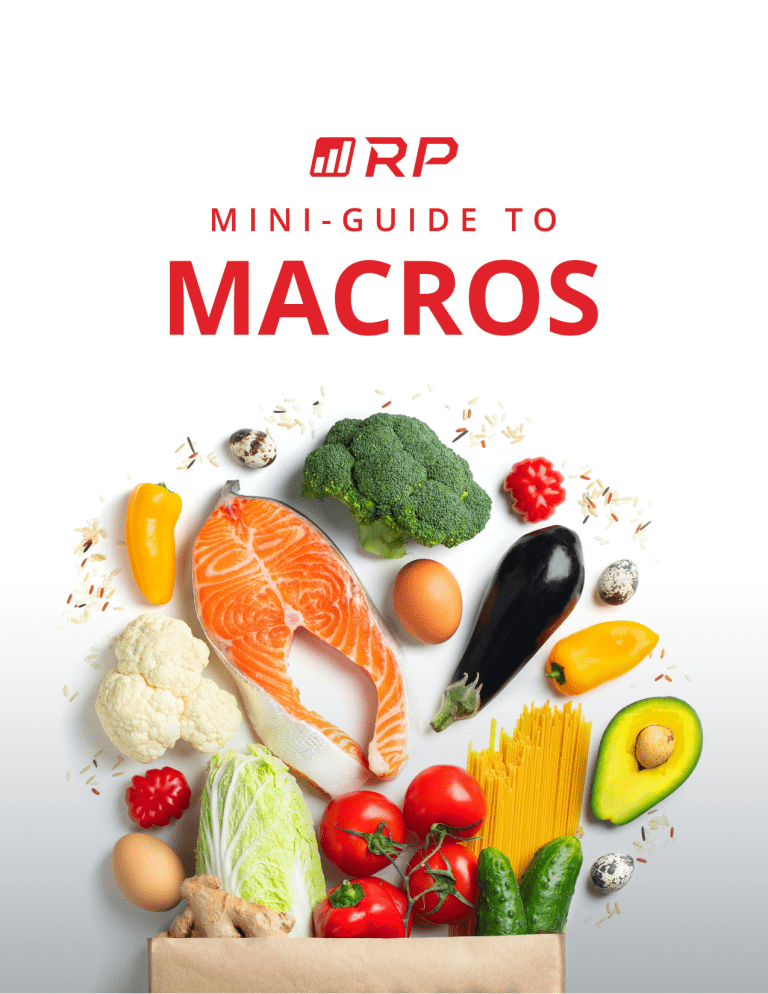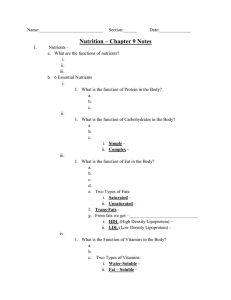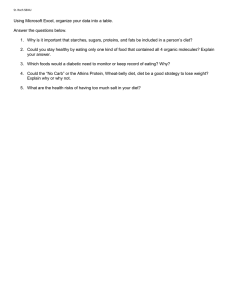Macros Guide: Protein, Carbs, Fats for Diet & Fitness
advertisement

RP Mini Guide to Macros Whether or not you’ve been on a diet, chances are you’ve probably heard the terms “calories” and “macros.” A calorie is just a measurement of energy—the energy we get from food to use in our bodies. Your body burns a certain number of calories a day, so if you consume less than your body burns, your body will have to break down some tissue to make up the difference and you’ll lose weight. On the other hand, if you consume more than your body burns, you’ll gain. Needless to say, calories are the biggest factor in determining your bodyweight, but your body can burn either muscle or fat for the missing energy on a diet and this is where macros come in! Macronutrients (or “macros”) are the major nutrients we consume; protein, carbohydrates, and fats. They all have calories. Protein and carbs have four calories per gram of macro, while fats pack nine calories per gram, making them more dense. Each of the three macronutrients also has a different impact on body composition. PROTEIN - TOP PRIORITY You can think of protein as the building block of your muscle/lean tissue. In addition, protein supports most basic bodily functions as it is also the building block for enzymes. We need to consume it in order to survive and to maintain or grow muscle tissue! Your main sources of protein should be lean and come from meats, seafood, dairy, and eggs—and for those with dietary restrictions or diverse tastes, non-animal sources such as mycoprotein, soy, tofu, seitan, nutritional yeast or vegan protein supplements. 2 RP Mini Guide to Macros Of course, you can also get protein from foods such as beans, legumes, nuts, etc., but these are usually lesser quality sources of protein (though they can definitely be a part of a healthy diet!). You should eat around your body weight in pounds in grams of protein per day. So, if you weigh 150 lb, that is around 150 grams of protein per day. This amount does not have to change according to diet phase. What do we mean by ‘lesser quality source’ of protein? Lesser quality protein refers to protein that is not digested or absorbed optimally and might have suboptimal amino-acid ratios (amino acids are the building blocks of protein and we need certain ones in certain amounts). Plant-based protein is often (but not always) of lesser quality so a bit more care needs to be taken to get enough protein on a vegan diet. CARBOHYDRATES - FUEL TO PERFORM Carbs help fuel our bodies to perform well inside and outside of the gym. This means the more active you are, the more carbs your body will need. Carbohydrates also help support muscle maintenance and growth when consumed after weight training by refilling muscular energy stores. 3 RP Mini Guide to Macros Who needs more carbohydrates? Picture an Olympic athlete and an everyday person that works in an office 8-10 hours a day. As you can imagine, the fuel needs of the Olympic athlete are significantly higher because they’re burning through many more calories than your average person that works a desk job. You can get carbs from a variety of foods like breads, grains, vegetables, and fruit. For health purposes, focus more on whole grains, fruits, and vegetables as your main sources of carbs. Simple carb sources (like Gatorade or kids’ cereal) are fine in moderation and can be a great choice for right after a workout when your muscles most need fuel replenishment! Carbs can be consumed according to your output, more when you train harder or are trying to gain weight and less when you move less or are trying to lose weight. The RP Diet Coach app will program these amounts automatically for you! FATS - ESSENTIAL TO HORMONES Finally, let’s talk about fats. While they’re last on this list, it doesn’t mean they are not important. In fact, fats are essential for healthy hormone production. The only reason they are last on our list is that, as long as you consume enough to hit your health minimums, fats will have the least amount of impact on your body composition and physical performance. 4 RP Mini Guide to Macros In other words, if you chose to reduce calories on a fat loss diet by reducing fat intake, it would not impact muscle maintenance like cutting protein would or impact performance like cutting carbs would. Again, this is assuming you don’t drop below your minimum intakes for health: Make sure you get at least 1/3 your pounds of body weight in grams of fat per day on a fat loss diet for healthy hormone production (that’s around 50g per day if you weigh 150 lb). When not trying to lose weight, you should probably aim a bit higher to be safe. It’s important to note that fats have 9 calories per gram — which makes them over twice as calorically dense as protein/carbs. Because of this, fats are not especially filling compared to proteins and carbs. There are also different types of fat that should make up more or less of your fat intake. Get most of your fats from nuts, avocados, and vegetable oils for best health! TRACKING VS PLANNING Once people learn about macros, their next step is often to start tracking and manipulating them for body composition changes. Food tracking apps like MyFitnessPal are great tools to help people become more mindful of what they’re actually eating day-to-day—especially since most people underestimate how much they eat by up to 20%. Because of this, awareness alone can facilitate some weight loss. For more consistent results, the next 5 RP Mini Guide to Macros step is to have a planned diet that will result in target weight changes; this requires knowing what, how much, and when you need to eat. That’s why we built the RP Diet Coach app! Our app is a proactive approach rather than just a food diary—it is a digital coach! Just like a diet coach, the app will design a custom diet based on your current body composition, lifestyle, and fitness goals. Then it’ll help you plan what to eat, how much of each macro you should consume and when—it will even send you meal time and weigh-in reminders for accountability! 6 RP Mini Guide to Macros More importantly, the RP Diet App will help you adjust your diet plan based on your results—so when life gets busy or you’ve had a few hiccups, the app will get you back on track. LEARN MORE HERE Of course, the app also has a built-in food tracker with a database of over 750,000 foods, a barcode scanner, and restaurant menus to make meal planning and logging your meals easier! So it acts as both a diary/tracker and your full-time diet coach! Now that you know all about macros and calories and have a resource to help you design a diet for your goals, it’s time to outline what those goals are! SHOULD I CUT OR SHOULD I MASS? For those unfamiliar, a cut is a fat loss phase. Maintenance is when you maintain your weight and focus on sport performance, recovery from a previous diet, or just balance in life. A mass phase involves gaining weight in order to add muscle. Which to choose is a question we get asked all the time. 7 RP Mini Guide to Macros Many folks want to gain muscle and lose fat and are not sure where to start. It is important to know that to lose fat you generally have to be losing weight (on a cut) and to gain muscle you generally have to be gaining (on a mass). These are two different goals with opposite diet strategies! As much as we’d like to say you can achieve both goals at the same time, the truth is that your best chances of success in hitting your long-term physique goals is to tackle one goal (or diet phase) at a time. To help people choose where to start we developed the flowchart below: 8 STOP COUNTING CALORIES Start today! Click the link below to get an EXCLUSIVE PRICE and put your diet on auto-pilot! 22 -In Streak Meal C 88.2% Meal Ad,-.nce Tot LEARN MORE Pounds from Goal 6.2/b Goa/-1' Recent Aver ge 4.8 lb Progress 192 189.6 "Target fat "Target Carbs 7Clf7C)g 184.8 '2.Cl g 182.4 '\4Cl g Jun2s '° s Horne .'\ slices a'oo\lt '2 t) steel cu natrneaI i' lE!J Ju/6 36 of 85 days Schedule Ju/30 compl t Ends on Fri, S ep 17 rr'P In:-, UL/ � 1/1/ Stats - f'




